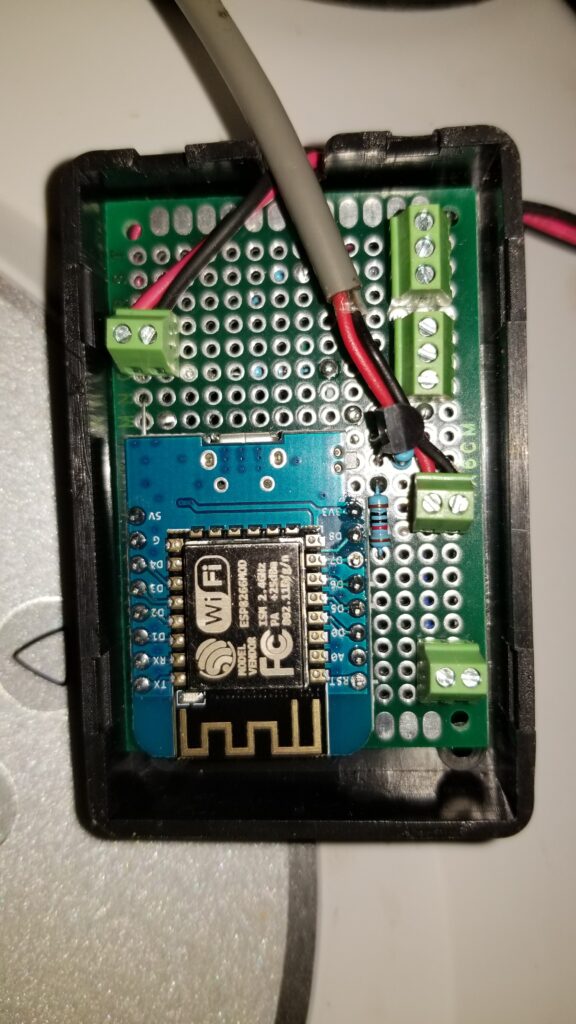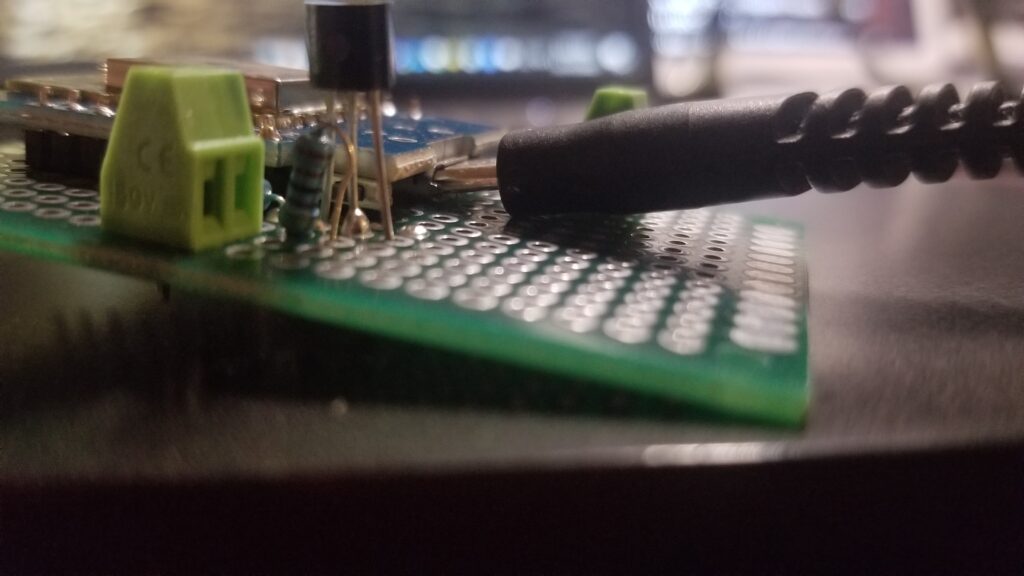Early in my Home Assistant journey, I had planned to connect something to and/or control our self-cleaning whole house water filter.
I had discovered the ESP8266 and it’s pulse_meter sensor and then planned to have a board to connect the sensors for the water meter and later the unfiltered water meter and a separate board for the water heater meter since it is a short distance away, but it is really is a very short distance.
After working with the ESP8266 for a bit, I have decided that there is no reason these functions cannot all be on the same board, thus the Home Assistant device “watermeter” has been repurposed and one of it’s identical syblings “watersystem” has be configured.
It may not win any prizes for awesome miniaturization, but it is packed in pretty tight. On the left is 5VDC power.
On the right, the pair of three terminal connectors are for the unfiltered and hot water flow meters. The voltage divider resistor networks to adapt the meters’ 5 volt output to 3.3 volts are on the bottom of the board. I have not yet connected them, but my confidence that they will operate is reasonably high.
Immediately below those is a Dallas TO92 DS18B20 temperature sensor. There is a 1/4″ hole drilled in the lid of the case to allow it to stick out a bit and measure the ambient temperature. Since all these water system components are installed in an unheated garage and it has gotten below freezing in there before, I need to monitor the ambient temperature and control a heat lamp during winter months.
Next is the pulse input for the main water meter, shown connected in this picture.
Finally, there is a connector intended to connect to the water filter to monitor when it’s cycle runs.
I have covered the details of the configuration elsewhere except for the binary_sensor.
binary_sensor:
- platform: gpio
pin:
number: 15
# D8 Filter Cycle Sense Switch
mode:
input: true
pullup: true
name: "Filter Cycle"
filters:
- delayed_on: 100ms
- delayed_off: 100ms
This is the input to monitor the water filter cycle. Since the original water meter, I have learned that the ESP8266 has built in pullup resistors that can be activated, eliminating the need to add a physical resistor. In this application, I may not end up needing it at all. The filter settings are currently there assuming I would be debouncing a switch input.
The water filter has a motor that runs a multiposition valve with a cam and a single sense switch. Investigations indicate that the switch is normally open, with 5V from it’s own controller across it’s terminals when it is at rest. When the filter cycle begins, the switch closes as the valve cam moves. The filter cycle puts the valve into three positions, a flush and a rinse position during the cycle and a normal position when done. I think I can monitor the 5V signal across this switch then either simply time when it has returned to 5V for long enough for the filter cycle to have ended or possibly even count the two stops in the process. I will need to play around with that.
The one thing that might be added is to connect one more GPIO pin to a relay output in order to trigger a filter cycle remotely. There is plenty of room for a couple of wires to run to an external relay. The area in front of of the USB jack needs to remain open in case it is needed to reprogram the board if it becomes unreachable on WiFi.
Funny story there. In arranging the ESP8266 D1 Mini board on the 40×60 perf board, I dithered on whether to mount the USB jack up or down. I decided to mount the board with the jack down, mostly because all the pinout illustrations of the D1 Mini board are shown that way. However, I did not account for how thick the connector is!
I was able to slightly mutilate the connector on a cable enough to fit, though. For future boards, I will need to put a little space under the board.

